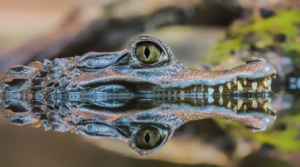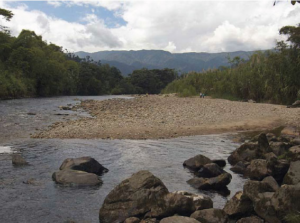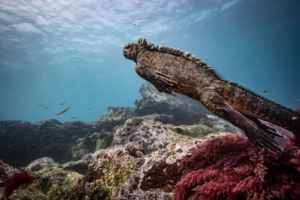Unveiling the Galapagos Islands’ Natural Wonders
The Galapagos Islands, bestowed with a unique geographical location and esteemed national park status, stand as a sanctuary for an astonishing array of plant and animal life. Venturing into the Galapagos is akin to stepping into a pre-human world. Situated far from Ecuador’s modern mainland, the Islands exist in a time warp, fostering the flourishing of wildlife. The distinctive plant life and wildlife found here are predominantly endemic, existing solely within the Galapagos Islands. This archipelago ranks among the world’s premier snorkelling destinations, where oceanic legends gracefully reveal themselves just beneath the surface. Among these marvels are the Galapagos green sea turtles, the exclusive sea turtle species inhabiting these captivating islands.

Encounter with the Galapagos Green Turtle
The green sea turtle, a member of the seven sea turtle species and the second-largest after the leatherback, commands attention. With lengths reaching up to 1.2 metres and weighing a substantial 225 kilos, it surpasses the average human’s weight threefold! Unlike most sea turtles, adult green sea turtles adopt a herbivorous diet. Their serrated jaw facilitates easy consumption of their primary food sources – seagrass and algae. Juvenile green sea turtles, on the other hand, display omnivorous tendencies, indulging in a diverse diet comprising insects, crustaceans, seagrass, and worms.
Unveiling the Green Sea Turtle’s Unique Traits
Contrary to popular belief, the green sea turtle’s name is not derived from the colour of its shell but from the greenish hue of its skin. This species stands out as the sole sea turtle known to regularly bask in the sun on shore. The Galapagos Islands serve as one of the world’s exclusive locations for this basking behaviour. Beyond their aesthetic contribution, green sea turtles play a crucial role in enhancing the health of seagrass beds and associated microhabitats. Their daily grazing trims the seagrass, promoting healthier and faster growth.
The Green Turtle’s Lifecycle
Green sea turtles, like their counterparts, embark on extensive migrations from feeding sites to nesting grounds, typically sandy beaches. Mating rituals occur every two to four years in shallow waters close to the shore. Females undertake a nocturnal journey to lay their eggs, choosing areas often frequented by their mothers. They use their back flippers to dig a pit in the sand, depositing between 50 and 200 eggs before returning to the ocean before sunrise. The tropical heat incubates the eggs for 45-55 days, and the hatchlings’ gender is influenced by the incubation temperature, with females thriving in warmer conditions.
Perils of the Hatchling Journey
A green turtle’s life faces its most perilous phase during the journey from nest to sea. Upon breaking their shells, hatchlings plunge into a survival battle against predators from all angles. Crabs, hawks, gulls, cormorants, albatrosses, and numerous other predators join the feeding frenzy as hatchlings dash towards the sea. Yet, the challenges persist. Even if they reach the water, sharks and frigatebirds await to continue the onslaught. The fortunate few who succeed face an ongoing struggle for survival and growth until they mature between 26 and 40 years old. Green turtles boast impressive longevity, potentially living for at least 70 years or more. A testament to this is one of the oldest known green sea turtles, thriving at the age of 90.

Discovering Green Turtles in Galapagos Waters
Sea turtles grace the waters surrounding every Galapagos Island, with two major nesting sites identified at Bachas Beach (Santa Cruz Island) and Punta Cormorant (Floreana Island). While they can be observed year-round, the period from December to March is particularly special, as pregnant females may be spotted around the shores, awaiting the cover of night to lay their eggs. The Galapagos’ prolonged isolation has rendered its wildlife fearless of humans. Unlike the Amazon, where sighting large animals is a rare feat, in the Galapagos, one must tread carefully to avoid unintentionally disturbing the native wildlife. This unique aspect allows for an up-close and personal encounter with these oceanic legends, providing a rare opportunity to witness them in all their glory.




